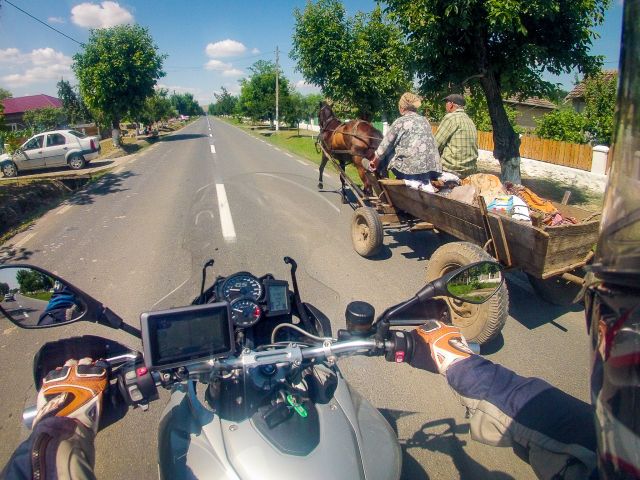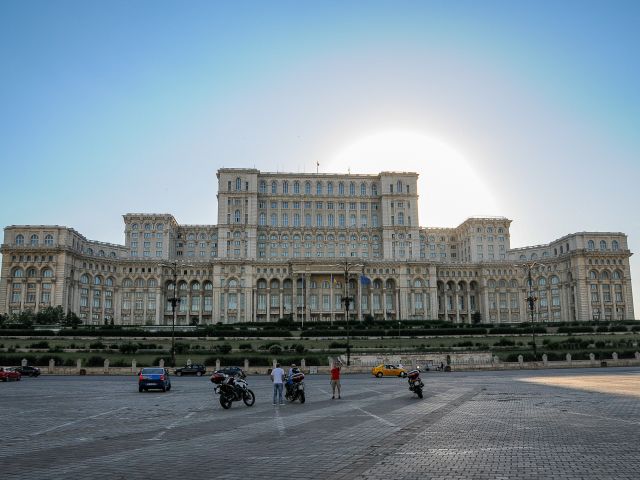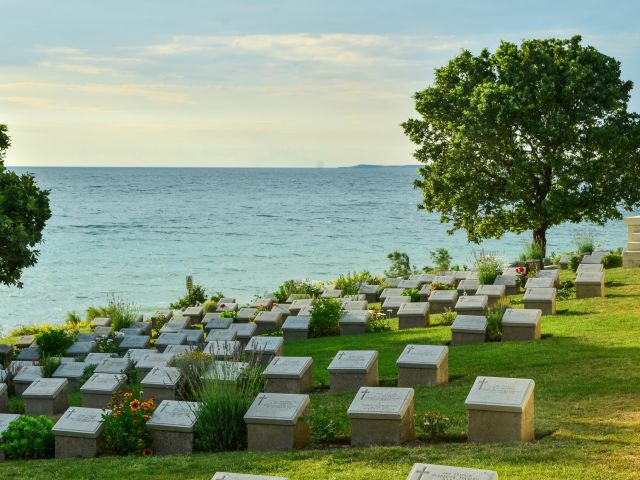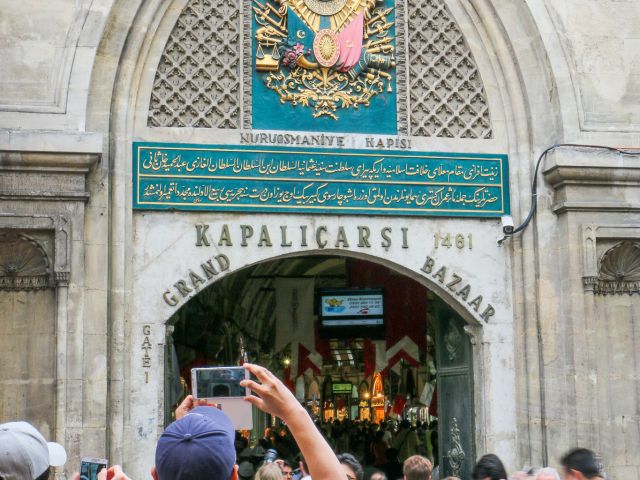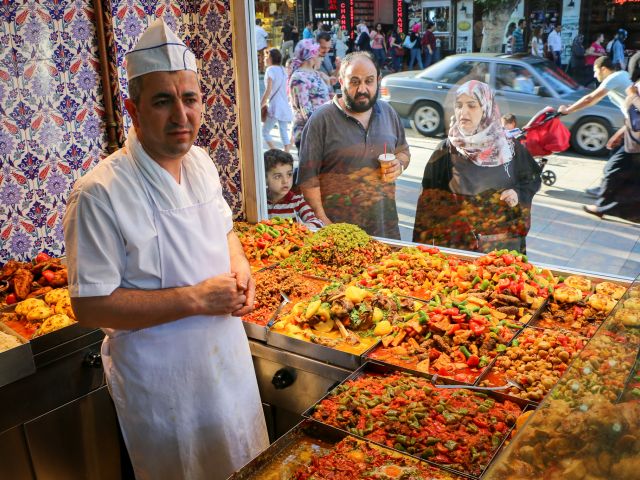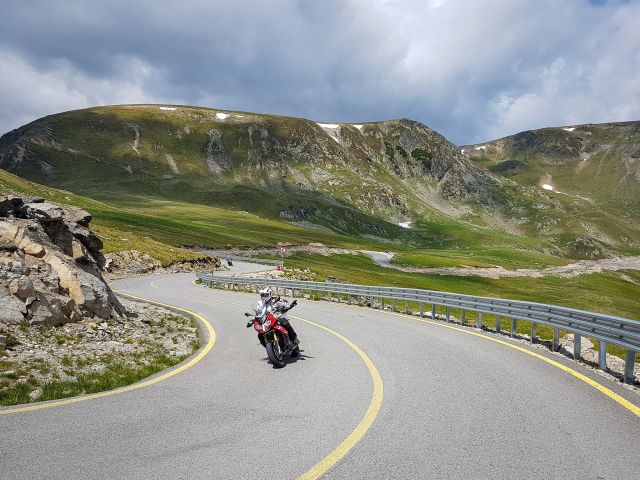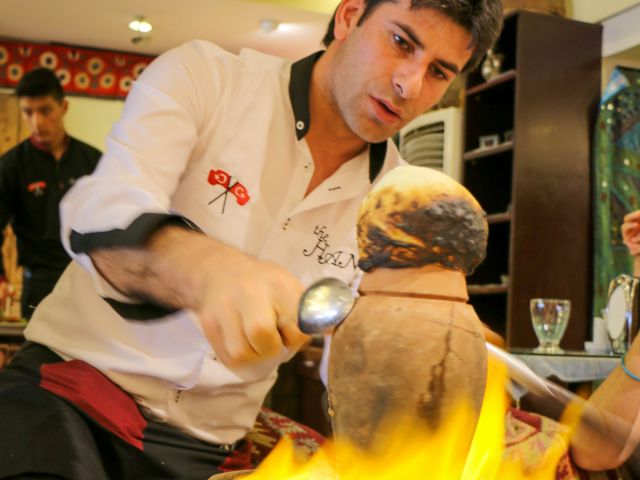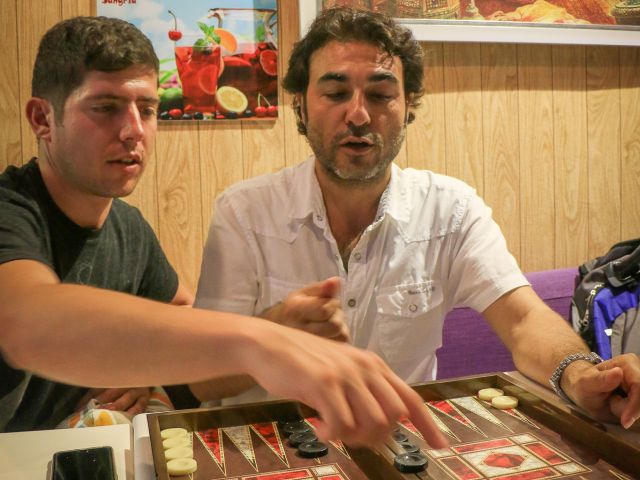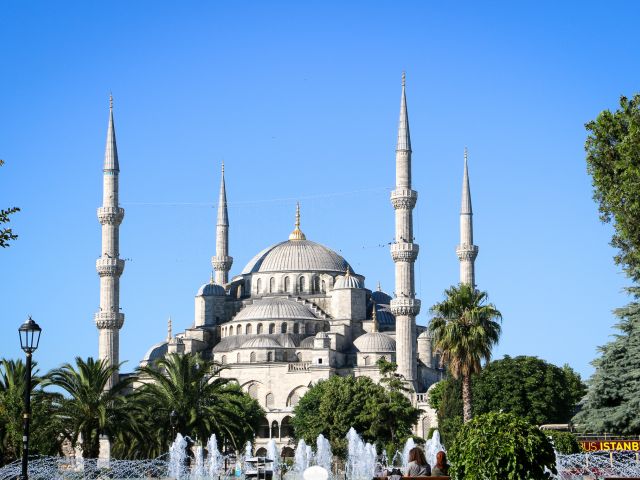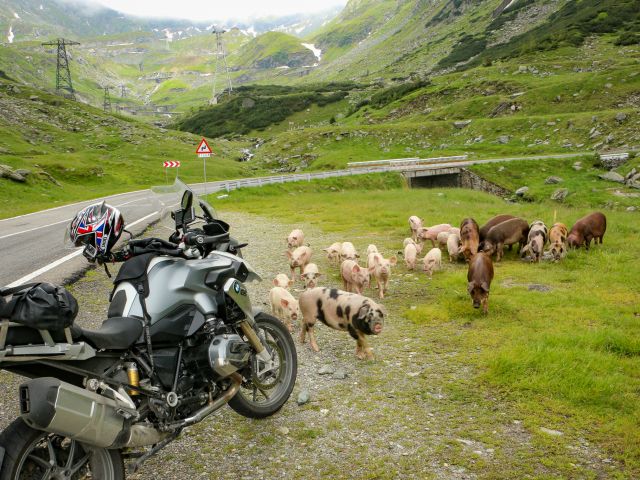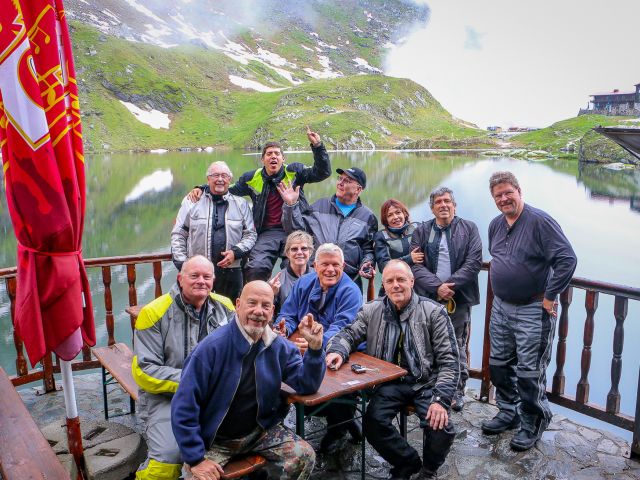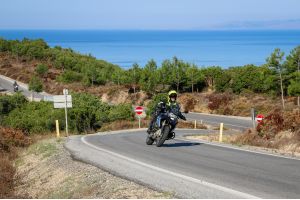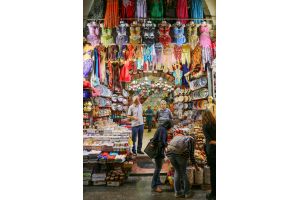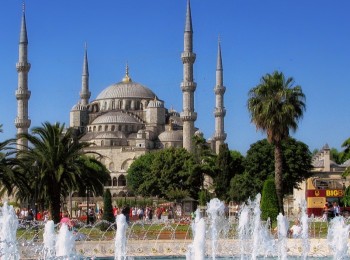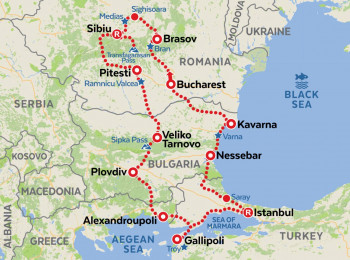Guided Motorcycle Tour - it’s definitely not just about the riding
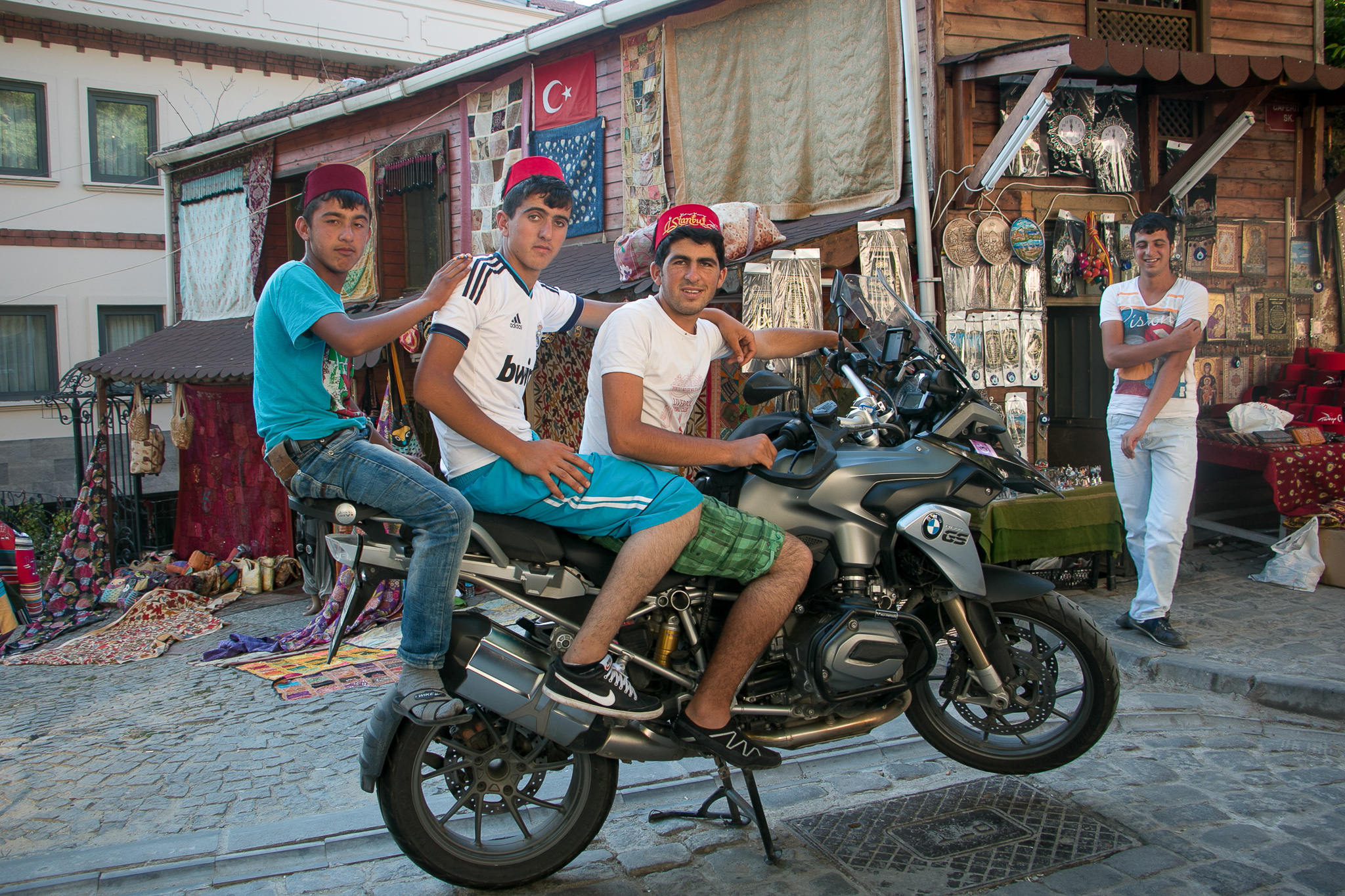
People might get a wrong perception when you mention a 'motorcycle tour' to them. Some might imagine a couple of hairy riders on choppers, cruisin' the Route 66, stopping only to refill, smoke, eat and sleep. Or a bunch of young guys in full leather suits on Ducatis and Yamahas, bruising knee sliders and scaring families in campervans along the twisty coastal road. Yes, there are riders that love to do one of those, but just reading the sales numbers of the last decade will clearly tell you that riders of all ages and genders mostly buy bikes to travel. To explore. To cross borders. To answer questions like: How different can a riding destination be from my hometown? And how different can a day be compared to a day before? If you're on a 'Romania to Istanbul Adventure', the answer to both questions is: very different!
The tour starts in Bucharest, the capital of Romania, and goes southeast all the way to the biggest city in Turkey. Together with the first and the last day at the starting point, it lasts for 16 days; of which three are 'rest days'. Besides Romania and Turkey, it crosses two more countries, Bulgaria and Greece, and covers all together roughly 2.800 kilometers.
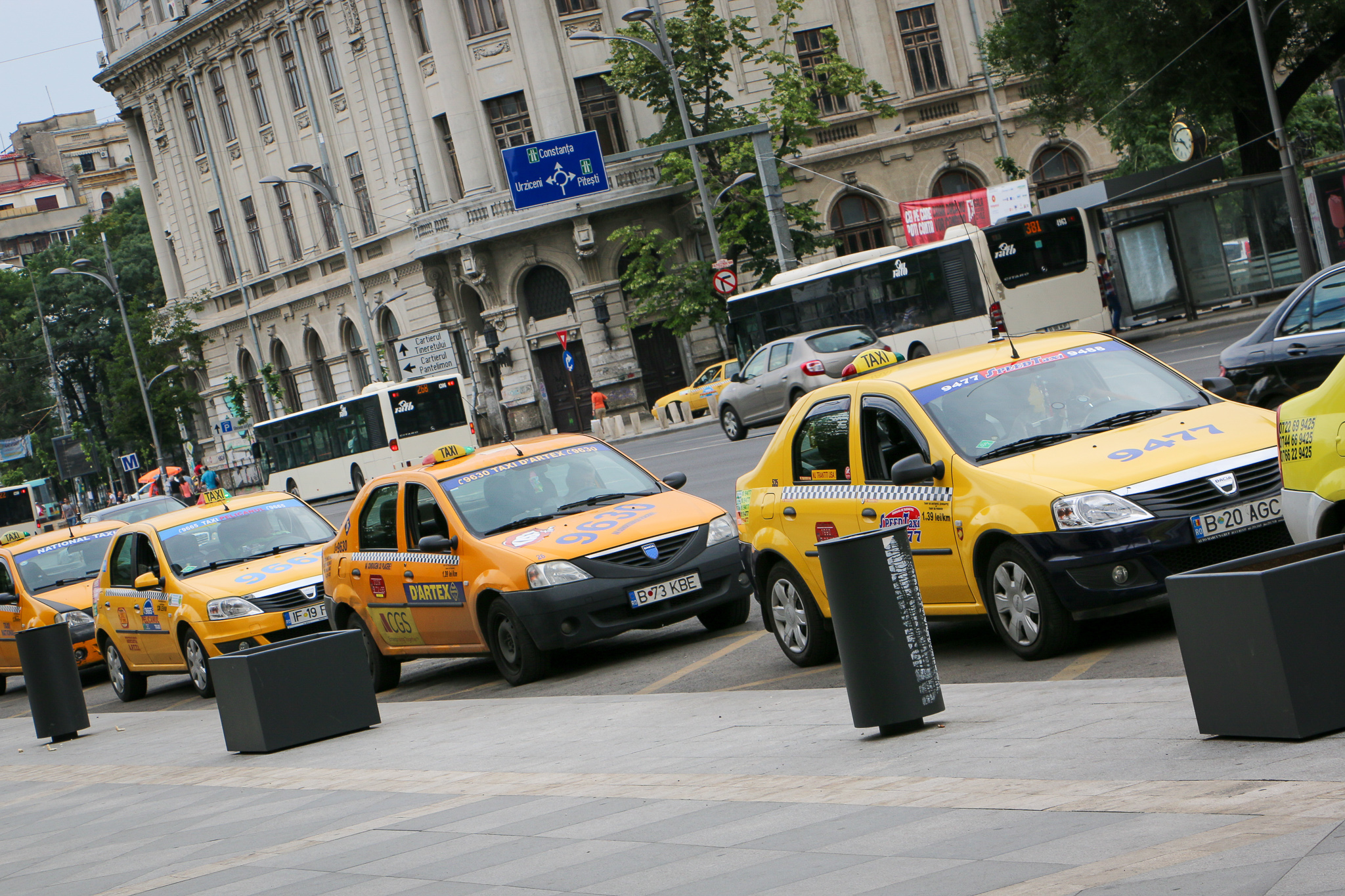
Do you think you know Europe?
After landing at Bucharest airport and being transported to the hotel in the city center, you won't find it so much different from other European capitals. Yes, there's a lot of Dacias (cars made in Romania) on the streets, probably you're also driving in a yellow one, and the traffic is a bit hectic - but not much less than in, for example, Paris. But just after we hop on the bike the next day and leave 2-million capital behind, the situation changes. For example: a horse cart is still a common way of transportation - in a country that's been a member of the EU since 2007! The asphalt is quite okay as long as you stay on the main roads. Once I tried to take a shortcut in a van and it was definitely not a good idea. I had to drive in the first gear to avoid endless potholes on the road that didn't deserve its name. To avoid destroying all the front rims on our bikes we carefully pick roads, which are, in general, just fine. And some of them are just superb...
Which one is better: the Transfagarasan or the Transalpina?
Not many people knew about Transfagarasan until the TV show Topgear declared it as 'the best road in the world' back in 2009. I agree that the road and the surrounding scenery are very unique - it’s a kind of a mountain racetrack! - but there’s another great road nearby. Most people would agree: 148 kilometers long Transalpina is even better than the only 3 km longer Transfagarasan. Expect two riding days that easily compete with the best roads in the World!

Carpathian Mountains - checked. Now let's go continue our ride towards Istanbul. And since the Carpathians are in the opposite direction - north - we have to spend a night in the most non-typical town of all of our tours: in an industrial town of Pitesti. I've just googled the top 15 things to do on Tripadvisor - and you know what's on the top of the list? Pitesti Prison Memorial. Honestly: we stop there only because there's nothing else in that area on our way south, but the hotel is okay and the restaurant we go to for dinner is one of the best on the whole tour. It might have to do something with the economy of the area as the Dacia factory with 14.000 employees is just about 15 kilometers from Pitesti. I've heard a story from a taxi driver about how Toyota was interested in buying the factory, and how many public investments were promised by the Japanese, but somehow French Renault got the deal. It is also interesting to know what's driving the country's economy, and why it became an EU member before Slovenia, which, in my humble opinion, has a much higher living standard than (most of) Romania. Okay, let's continue our ride towards ...
New day, new country, new surprise(s)
Bulgaria is to us Slovenians (culturally) closer than Romania, as their language has Slavic roots, while Romanian is a mixture of Balkan and Roman languages, and is somehow more similar to Italian. But looking at the living standard you can't say Bulgaria is much different than Romania; looking at numbers it's even worse. The average Bulgarian net salary is 605 EUR (that's monthly, not weekly!) while in Romania it's 708 EUR. In Slovenia it is 1.290 EUR and in Germany, just for reference, 2.913 EUR (source: Wikipedia). But what's important for a traveler: most Bulgarians are warm, friendly, hospitable people. They really do know how to handle meat in the kitchen, but not only meat; their gardens produce fantastic peppers, tomatoes, and other vegetables, and when they ask you whether you want to try the local wine, say yes. I vote for the red Mavrud, grown in the south. It goes well with strong meat dishes.
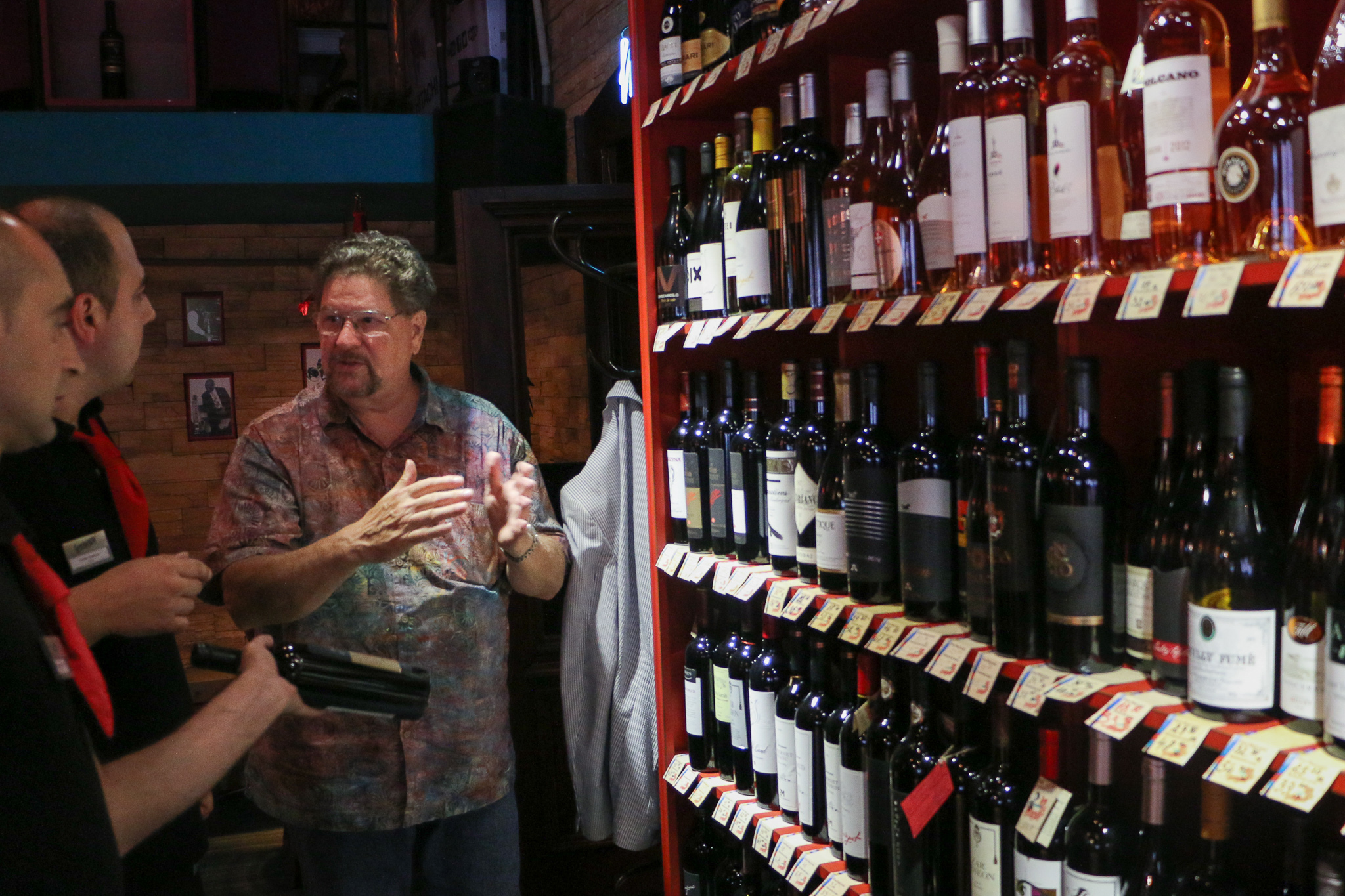
The biggest impact on my personal perception of Bulgaria has to do with Plovdiv, the oldest continuously inhabited European city, today the second-largest city in the country. In this cultural capital of Bulgaria you'll find a Roman theater, many churches, two mosques, synagogue, theaters, museums, shops, and also great and not expensive restaurants with 'no guns' signs on the doors. The old center is closed for traffic and everything is within a walking distance. A kind of ‘museum’ was also our hotel with the rooms, which were probably considered modern ... back in the 80s. I've heard that the rooms have been renovated. Ah, I was so sorry to hear that. Chairs with leopard-skin-like covers and red and purple walls were so sexy! We used to have a rest day in Plovdiv and I can almost say I'm sorry not to stay there for more than one night.
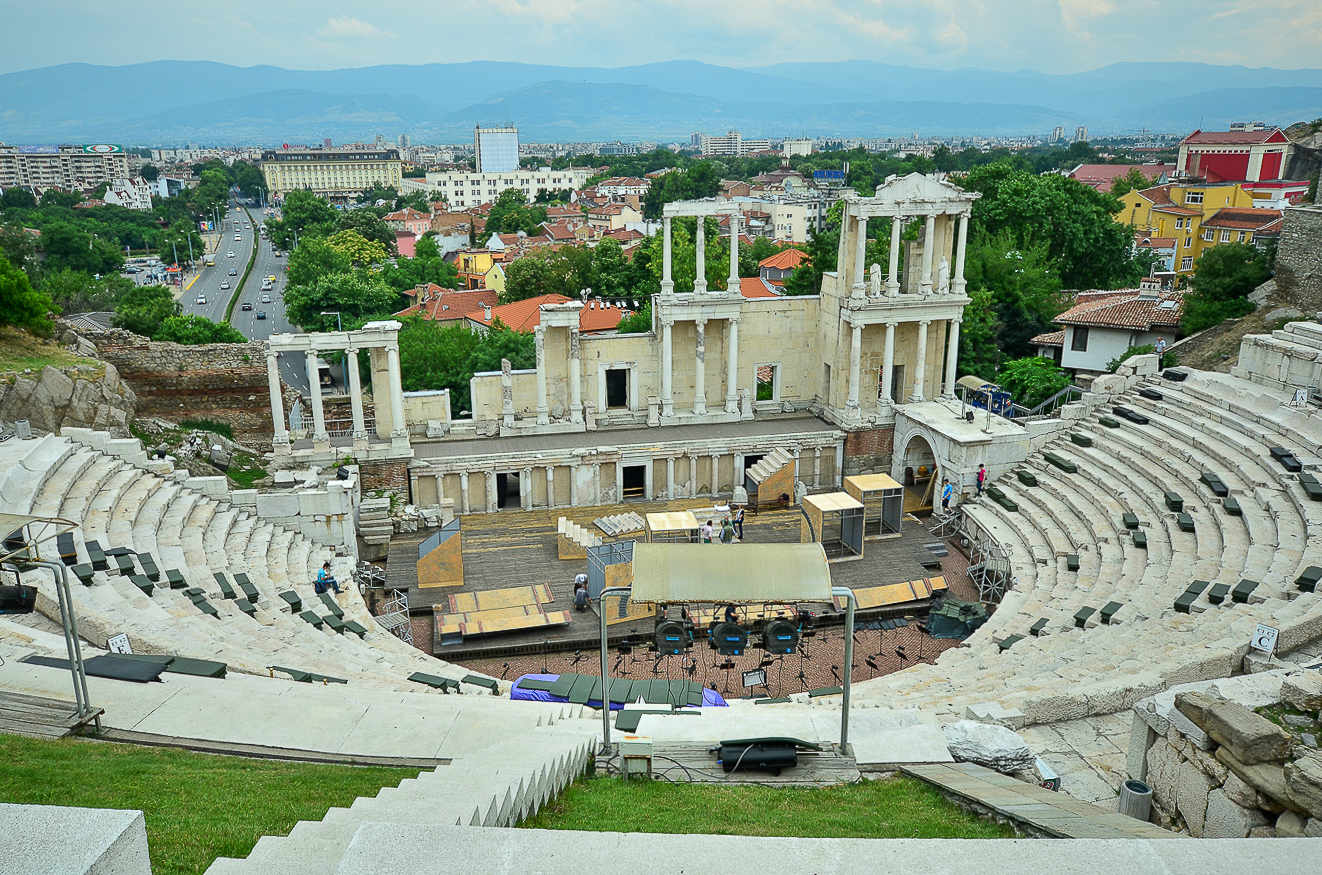
A place of tears for Australians (and not only for them)
The next stop on the tour is Alexandroupoli, Greece. When I did the tour the last time, we only stopped there for lunch - and rushed further to Turkey. I have to admit it was a long, long riding day - 400 km! - And that included two border crossings with the last one being quite challenging. The Turks are very strict with checking the papers and that's why our guides will ask you two times in the morning: "Do you have your passports, bike papers, and rental agreements?!" Please don’t dare to forget something in the hotel.
Gallipoli peninsula is a wonderful place to ride (or just be), one of the most peaceful and serene on the whole tour. In WWI it was far from that as approx. 250.000 people died in the campaign battle - on each side, the Entente Powers and the Ottoman Empire. Some 7.500 Australians were killed and another 18.500 wounded. We always take time and ride to graves and memorials and hope that a tragedy like that will never happen again.
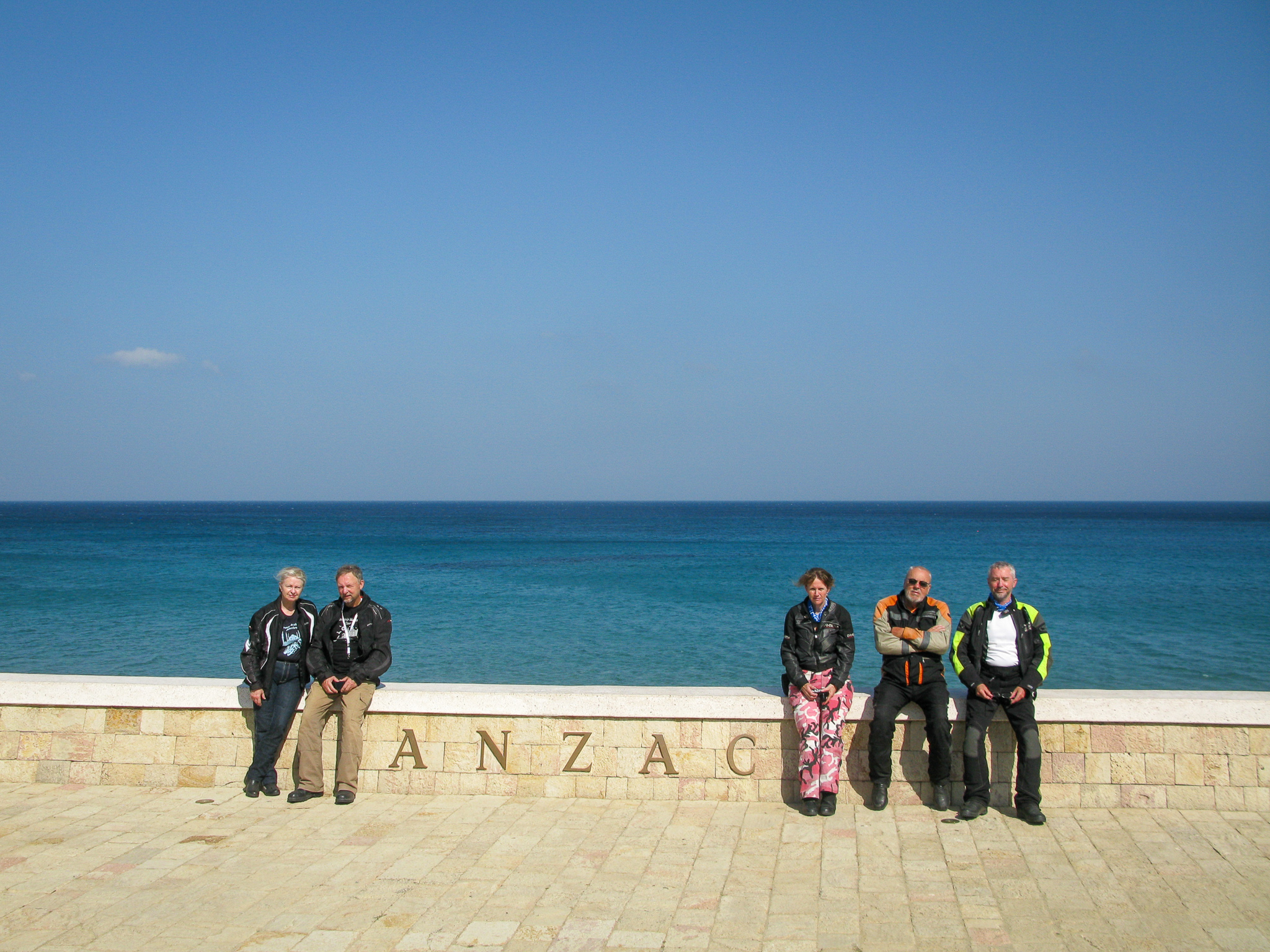
What follows after leaving Gallipoli is, considering riding, probably the most boring riding day of all AMT tours. But there's a good reason for doing so, and that is Istanbul, which is far from boring. On our first edition of the Romania to Istanbul Adventure we 'only' stayed there for two nights, but we quickly discovered that after visiting the 'must-see' sights there will definitely not be enough time to rest for our riders. That's why now there are two rest days: the first one is for sightseeing, the second one is for shopping. Resting. And more sightseeing, if you're into that. You can also ride over the Bosphorus Bridge to Asia, but my suggestion is that you leave the bike in the garage. Navigating through a 15 million megacity is pretty challenging, drivers are (from our point of view) quite aggressive. If you do it anyway: don't be afraid of using horn as much as locals do, which is - a lot.
This is what we came for!
After you check the main sights (Hagia Sophia palace, Sultanahmet District, Topkapi Palace, Basilica Cistern, ...) it's time for shopping in the Grand Bazar. Suggestion: don't stop after the entrance and start bargaining immediately, but continue walking the crowded streets towards the Golden horn, until you find yourself surrounded by locals doing their daily shopping. The shops are not as shiny and fancy as the one in the Grand Bazar, but the prices are reasonable and the smell of spices and coffee is just as great, if not better. Keep in mind the maximum weight of your luggage on your flight back home... And our support van guy’s back.

On the other hand: dare to buy nothing. Spend your Turkish liras for shish kebabs, for pidas, for fresh orange juices, for three coffees a day with some delights on the side. Spend one hour at breakfast. Go to hamam! Men, go shave - the experience is totally different from doing it in your bathroom! Make yourself a picnic in the park, just like locals do. Chat with them. Let them teach you a game they're playing. Ah, Istanbul is such a wonderful, vibrant and colorful city! An experience like that will give you much more than fridge magnets. And the silk scarf you bought in London was made in Turkey anyway.
The tour doesn't stop here. After leaving Istanbul behind, we stay another two nights on the Bulgarian coast of the Black Sea. It’s not that the cities of Nessebar and Kavarna don't deserve to be mentioned, but let me finish the article right here. I wrote too much already anyway. Sorry! It's hard to put so many memories and photos into a single blog. Dear reader, thank you for reading till the end, and when you have a chance, go and experience it yourself.
Connected tours
Romania to Istanbul Adventure
Ride two of Europe's best roads: Transfagarasan Road and the Transalpina and visit Istanbul.
From bustling Bucharest to picturesque rural villages seemingly lost in time, all the way down to oriental Istanbul and the scenic Black Sea Coast, there is something for the sightseer in everyone.
Culture:
Roads:
Landscape:
QUICK FACTS
- Countries: Greece, Turkey, Romania, Bulgaria
- Days: 16 Days: / 14 riding days
- Dates:
from 3990.00
BACK TO BLOG




